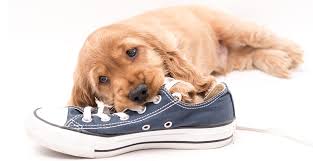BLOG
The Impact of Chewing on the Development of Dogs and Cats
The Impact of Chewing on the Development of Dogs and Cats
The chewing phase is a natural part of the development of both puppies and kittens. Many Dogs and Cats owners feel worried and confused when their pets constantly chew on household items. However, this behavior is not just a bad habit but an important part of their physical, sensory, and behavioral development. Let’s explore in detail how this phase impacts teething, sensory growth, and their overall behavior.
Understanding the Importance of the Chewing Phase in Dogs and Cats
The chewing phase is a natural part of the development of both puppies and kittens. Many dog and cat owners feel worried and confused when their pets constantly chew on household items. However, this behavior is not just a bad habit but an important part of their physical, sensory, and behavioral development. Let’s explore in detail how this phase impacts teething, sensory growth, and their overall behavior.
1. Teething and Oral Development
The chewing phase in dogs and cats is most intense during the teething period. For puppies, this typically occurs around 3-6 months old, while for kittens, it happens between 2-6 months.
- Teething and Gum Irritation: When baby teeth start to fall out and permanent teeth grow in, their gums often feel itchy and uncomfortable. Chewing is a natural way for them to relieve this sensation. Not only does it help ease the discomfort, but it also supports teeth growth, helping them align properly.
- Strengthening the Jaw Muscles: As dogs and cats chew, their jaw muscles are exercised. Especially for dogs, this chewing helps build a strong jaw and enhances their bite strength. This is crucial for their future development.
2. Sensory and Cognitive Development
The chewing phase is also a way for puppies and kittens to explore and develop their senses. They don’t just use their mouths for eating but also for discovering the world around them.
- Exploring the World Through the Mouth: Young dogs and cats haven’t fully developed their senses, so chewing is a way for them to learn about different materials, tastes, and textures. Through this behavior, they learn to distinguish between objects and figure out what’s safe to chew and what’s not.
- Developing Spatial Awareness: Chewing helps them develop a sense of spatial awareness and object recognition, enabling them to differentiate between household items and food.
3. Behavioral and Psychological Development
Chewing isn’t just about physical development but also plays a crucial role in the mental and behavioral growth of dogs and cats. If not guided properly, this phase can extend into adulthood, becoming a bad habit.
- Releasing Energy and Reducing Stress: For both dogs and cats, chewing helps release excess energy. For animals with a natural prey drive, like dogs, chewing mimics the act of hunting and capturing prey. Without appropriate outlets for chewing, they can become stressed or develop destructive behaviors.
- Learning Boundaries and Rules: During this phase, pets begin to learn boundaries and house rules from their owners. With consistent guidance and providing appropriate toys, they will gradually understand what they can and cannot chew. This is an essential training process that shapes their future habits and discipline.
4. Helping Dogs and Cats Through the Chewing Phase
- Provide Appropriate Toys: Safe chewing toys like chew bones, rubber balls, or scratching pads are great tools to help pets channel their chewing behavior. These toys not only protect household items but also support healthy dental development.
- Set Clear Rules: When you catch your pet chewing on furniture or inappropriate items, quickly intervene and redirect them to appropriate toys. Consistency and patience in training will help them learn their boundaries.
- Increase Physical Activity: Dogs and cats need to release their energy through exercise. By playing with them and providing more opportunities for physical activity, you can reduce the likelihood of chewing out of boredom or excess energy.
Conclusion
The chewing phase is an essential part of the development of dogs and cats. Understanding why and how this behavior affects their physical and mental growth helps you address it effectively. Providing a supportive environment, along with guidance and patience from pet owners, ensures that pets will pass through this phase healthy and well-behaved.
WINVN INT CO., LTD
Natural joy made in Vietnam
☎️ +84 932 118 447
📧 info@winvnint.com
🌐 winvnint.com
🌐 https://winvnint.trustpass.alibaba.com/
📌 29, 29 Street, Van Phuc Residence, Thu Duc City, Ho Chi Minh City, Vietnam
 Tel: (+84) 932 118 447
Tel: (+84) 932 118 447  Email: info@winvnint.com
Email: info@winvnint.com 










